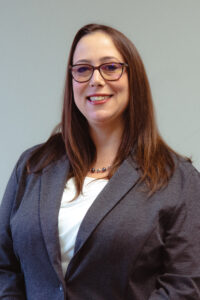KNOW. SEE. RESPOND.
The safety and well-being of children in the care of Ys across the U.S. is, and always will be, our priority.
Serving the youth in our community is a vital part of our mission, and we are committed to creating a safe environment for the thousands of children and teens we serve every year.
As the nation’s largest youth-serving organization, our most important work includes ensuring their safety and well-being — it is foundational to everything we do at the Y to help them learn, grow and thrive.

See Something. Say Something.
In our commitment to provide the best in programs, services and supporting our community, the YMCA of Greater Toledo has provided an anonymous Concern/Complaint Reporting platform for your use.
To make an anonymous report, please fill out the form or call the number below.
All calls and reports are confidential.
"The YMCA is dedicated to making every effort possible to identify and prevent child abuse and neglect. The YMCA encourages adults and organizations to join us to make the community a safer place for children to live, learn, and play."
Brad Toft, President and CEO
YMCA of Greater Toledo

We as Y staff, members, community members and volunteers need to build on the work we’ve done and develop the three habits in child abuse prevention:

We KNOW when we understand the common practices of those who harm and the best practices to stop them.

We SEE when we can recognize the warning signs or behaviors that signal abuse or risk for abuse.

We RESPOND when we take action in response to behaviors we recognize as being inappropriate or questionable.
As we see and interact with these three habits and their corresponding images in various ways at our YMCA’s throughout the day, they remind us of our responsibility to safety and what we can do as individuals to protect youth from abuse.
Together, let’s commit to protecting the youth in our YMCA and our communities by practicing the three habits of child abuse protection each day.
Because when we know and understand how abuse happens, see the warning signs, and are prepared to respond quickly to prevent it, we create a culture of child abuse prevention that results in even safer environments for kids to reach their full potential.
Learn more about know, see, respond below.
If we don’t understand child sexual abuse, we can’t end it. We KNOW today that:
- One in ten children will be sexually abused before their 18th birthday.
- 90% of child sexual abuse victims know their abuser.
- Approximately 30% of children who are sexually abused are abused by family members.
- 60% of child sexual abuse victims never tell anyone.
- False reports are rare. Research shows that only 4 to 8% of child sexual abuse reports are fabricated.
KNOW how to recognize boundary violations and how offenders operate. Teaching children about their bodies, recognizing warning signs, and responding to any concerns are important first steps. Even very young children can learn some skills to help keep themselves safe from sexual abuse, but it’s up to parents to help them learn what they need to KNOW.
The above statistics provided by Darkness to Light.
Important things you can teach that will help you help your child stay safe
Preschoolers understand the idea of rules, such as rules about playing nicely with others and rules about being safe, like wearing seat belts. So as you teach these rules, just add rules about touching their bodies.
First, talk to your child about body parts, including private parts. This will give your child words to use when he/she needs to tell you anything about his/her body, like an injury or rash or other problem in that area.
Then add rules about private parts, like “Never let other people touch your private parts unless Mommy or Daddy knows about it.” Children also need to know what to do when someone breaks the rules about touching.
Teach children:
- What to say to someone who breaks the rules about touching
- To move away from someone who is breaking the rules about touching
- To tell you or another adult if someone breaks the rules about touching
- Phrases so he/she can tell others to stop and practice saying them with your child
- Teach your child to say this to anyone who invades their privacy (other children as well as to adults)
- To move away from anyone who is breaking the rules about touching
- Tell your child that it’s ok to get out of someone’s lap or pull away from a hug, even if an adult asks them not to
- To tell you or another adult, like a teacher or caregiver, if someone breaks the rules about touching them
How to recognize if a child is in danger
Always keep your eyes and ears open for signs of abuse, listed below.
If something is wrong, you may SEE a sudden change in your child’s behavior, or you may hear unusual comments.
If you SEE or hear these things, follow up. Find a relaxed time to talk with your child, asking them about your concerns.
Here are some signs to look for:
- Unkempt or malnourished appearance
- Unexplained bruises, welts, or burns
- Disturbed sleeping or eating patterns
- Abrupt changes in behavior, anxiety, clinging, aggressiveness, or withdrawal
- Sexually transmitted diseases & infections
- Discomfort with physical contact
- Fear of a certain person or place
- Fearfulness or depression
— —
How to recognize if an adult is a danger to a child
Offenders often operate through a process called “grooming.” Child grooming is the deliberate process of gradually initiating and maintaining a sexual relationship with victims in secrecy. Grooming allows offenders to slowly overcome boundaries long before sexual abuse occurs. On the surface, grooming a child can look like a close relationship between the offending adult, the targeted child and (potentially) the child’s caregivers. The grooming process is often misleading because the offender may be well-known or highly regarded in the community. As a result, it’s easy to trust them.
Examples of red flag behaviors:
- Pressing boundaries or breaking the rules to give a child special attention
- Giving inappropriate physical affection
- Sympathetic listening that starts to build barriers between a child and their parents or friends
- Offers to help the family in order to gain alone time with a child
- Gaining access to a child via the internet
If you see warning signs from your child or an adult, or you hear about something that sounds like abuse, RESPOND by reporting it immediately.
How to react if your child tells you about sexual abuse or inappropriate behavior
Your response plays a big role in how your child understands abuse and how he/she recovers.
- Give attention, compassion, and belief.
- Listen calmly and openly.
- Don’t fill in gaps.
- Don’t ask leading questions about the details.
- Ask open-ended questions like, “what happened next?”
- Don’t overreact.
- Say, “I believe you” and “what happened is not your fault.”
— —
What to do if you believe a child is being abused
You do not need to have proof that abuse is occurring to make a report, only reasonable suspicion. Reasonable suspicion means that you have witnessed maltreatment or boundary violations, either in the child or adult, or both. Or, you have received a disclosure from a child about abuse, neglect, or boundary violations towards them.
FILE A REPORT
Child sexual abuse reports should be made to the police and/or state child protective services. To make a report in Ohio, call 855-642-4453. To make a report in Michigan, call 855-444-3911.
Resources

More About Praesidium
Praesidium’s mission is to prevent the sexual abuse of children and vulnerable adults and to preserve trust in respected organizations, like the YMCA.
Praesidium Accreditation Team
The Y works closely with Praesidium, the national leader in organizational abuse risk management.
Certified Praesidium Guardians™ are certified experts who have demonstrated the ability to implement practices that lead to a safer environment in an organization by developing and maintaining abuse prevention skills.
Our Y accreditation team listed below are dedicated to educating Y staff and the larger community on how to recognize and help prevent child abuse.
![[YMCA of Greater Toledo LOGO SQ]](https://recliquecore.s3.amazonaws.com/imgs/ymca_logos/named_y/blue_purple.png)
![[YMCA of Greater Toledo LOGO FULL]](https://s3.amazonaws.com/recliquecore/imgs/ymca_logos/named/blue_purple.png)







